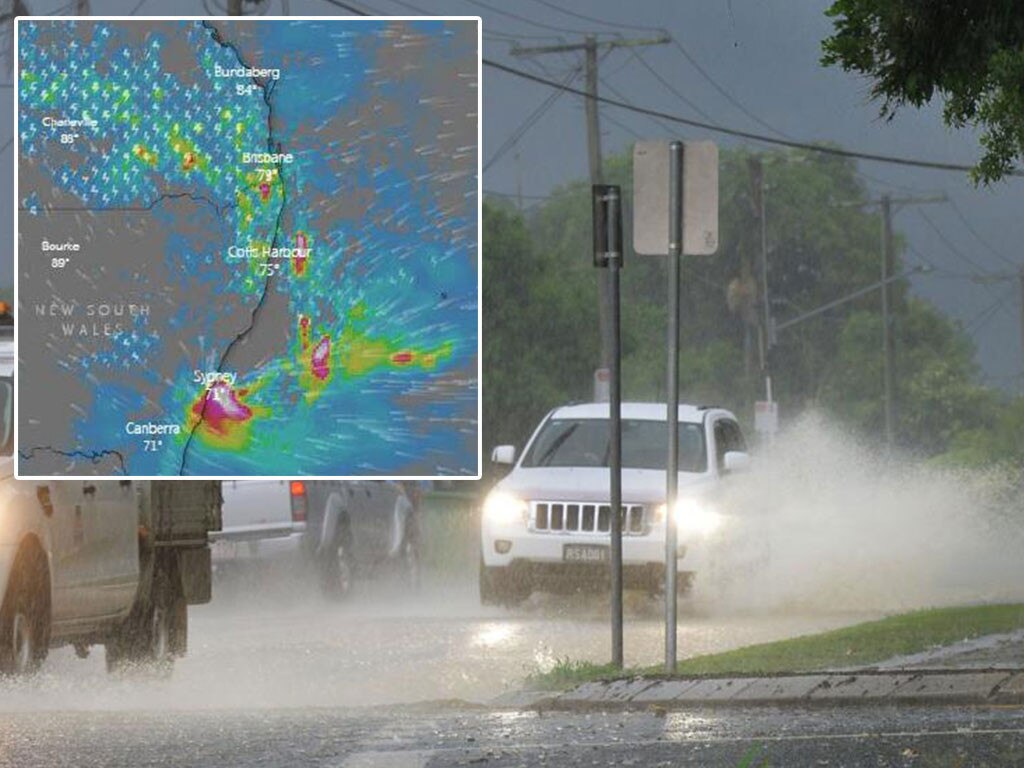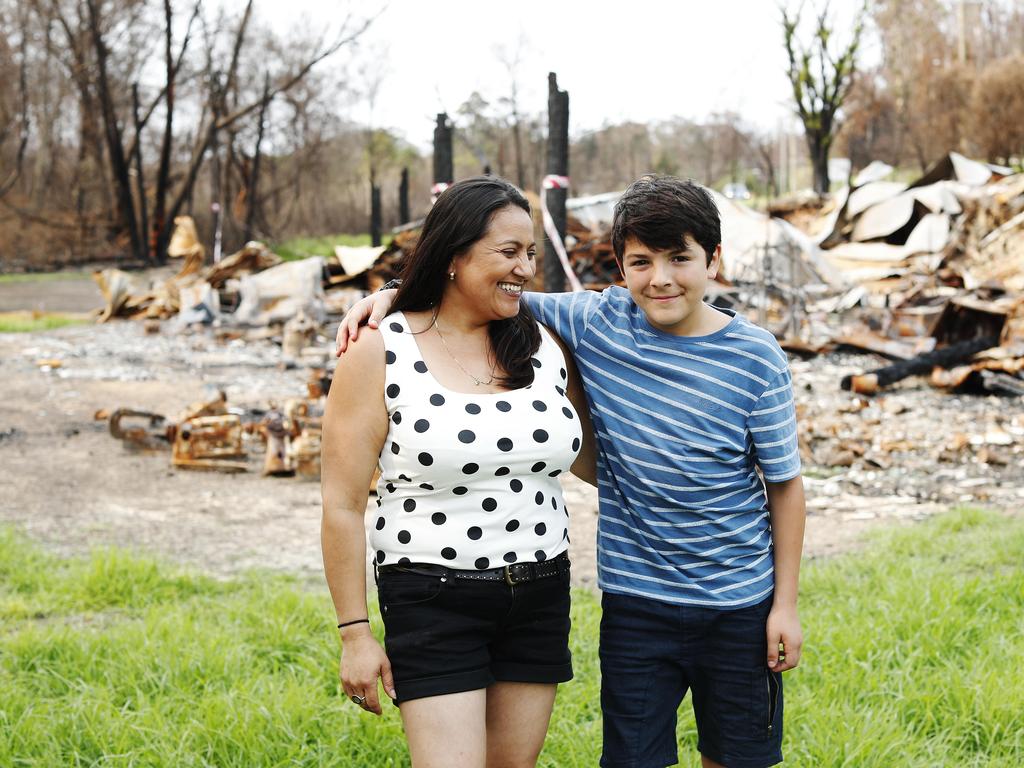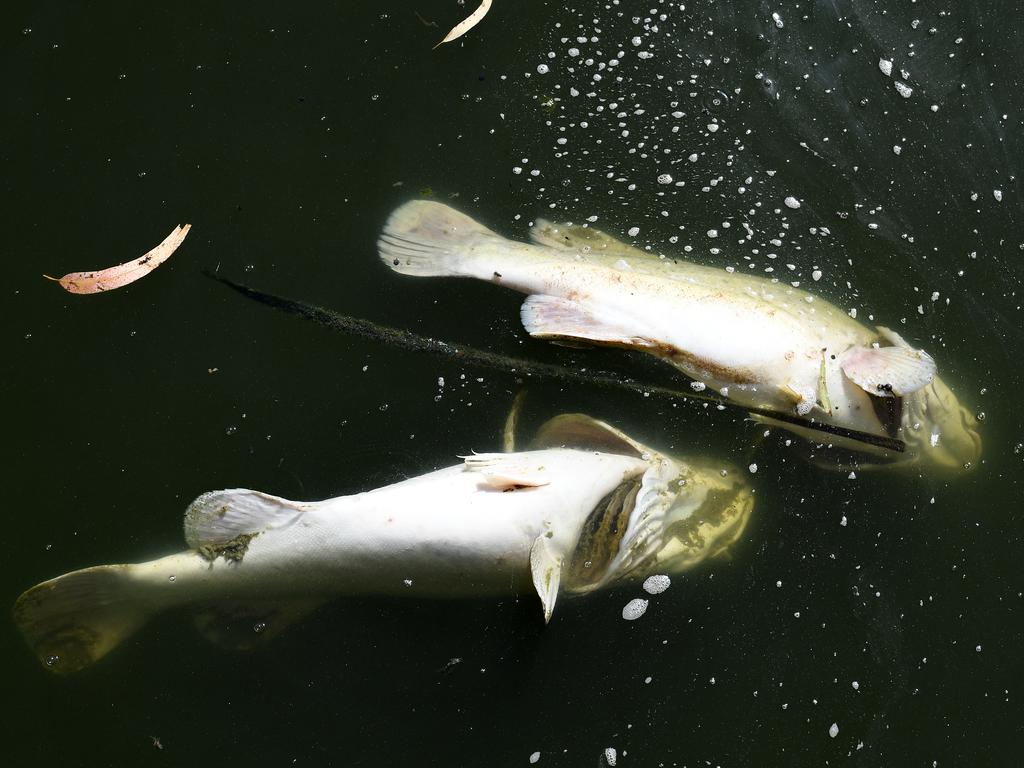Long-lost rain revives fields of dreams
Rain offers hope of renewal, with some farmers to plant crops for first time in years.
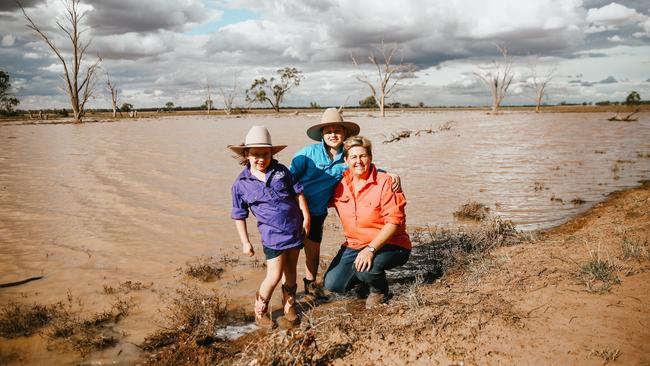
Widespread and at-times torrential rain across eastern Australia has offered hope of renewal in the nation’s parched food bowls, with some farmers expecting to plant crops or take on stock for the first time in years.
Extraordinary downpours concentrated in southeast Queensland and northeast NSW led to some once-in-a-century recordings on Thursday, while less spectacular but highly useful rain in some of the most drought-hit central areas of those states offered almost-forgotten prospects of a normal season. National Farmers Federation president Fiona Simson said the rainfall had come “at almost the exact right time of year”.
“Farmers will be hoping that many millimetres of rain fall to replenish depleted soil moisture profiles and set up for the winter cropping season,” Ms Simson said. “As we near the end of summer, rain now is also ideal for pasture growth in the autumn months.”
She said this would encourage livestock producers.
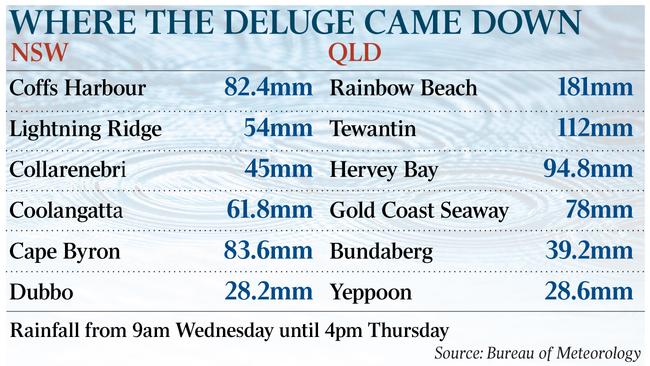
Grain Growers Ltd chief executive David McKeon said some farmers on the Liverpool Plains in northern NSW and central Queensland and the Darling Downs were planting late-season sorghum. “It’s great that they have finally been able to get their tractors out of the shed and their seeds into the ground,” he said.
For Janie and Richard Tink, who farm lupins, barley, canola and wheat and raise cattle on a 1400ha property south of Narromine in central NSW, the transformation from deluge to severe drought and back could not have been more spectacular. “In 2016, we had a flood which wiped out all our crops,” Ms Tink said. “The water just came, then it rained and it rained all year.”
From then until last Sunday, it hardly rained on the property at all, to the point that in 2018 they didn’t plant a single seed.
In those intervening years, the annual rainfall was 200mm, and the dams were dry, but then it all changed in less than an hour.
“On Sunday night, we had 73mm of rain at the house, and our cropping paddocks, which are not far from the house, had 125mm of rain,” Ms Tink said. “We had a few teary moments, I can tell you. It has been a very long time.”
Ms Tink said the family’s finances were so tight they had to consider carefully which extra-curricular activities they could afford for their children.
Meteorologists warned that while the massive low-pressure weather system would ease drought conditions as it continued dumping rain into next week, it could also lead to floods, dangerous winds and wild surf.
The rain spanning a huge swath of the eastern seaboard is expected to continue until the middle of next week, with the heaviest falls moving south.
Dean Sgarbossa, from the Bureau of Meteorology’s extreme weather desk, warned that the rain may cause floods and other emergencies. “An intense coastal trough of low pressure is expected to deepen over coming days, which may result in intense bursts of rainfall over coastal parts of NSW,” Mr Sgarbossa said. “Embedded low-pressure centres may develop within this trough leading to intense rainfall that may result in localised flash flooding, road flooding or riverine flooding, damaging winds and damaging or hazardous surf conditions about exposed coastal areas.”
Areas on and east of the Great Dividing Range experienced the biggest downpours on Thursday. “We have seen rainfall rates that have exceeded 100-year average recurrence intervals,” he said.
Coops Corner on the Queensland Sunshine Coast received 260mm in 24 hours and 388mm in 48 hours. Some northern rivers and mid-north coast communities in NSW received massive falls during Thursday, with Woolgoolga receiving 129mm from 9am to mid-afternoon.
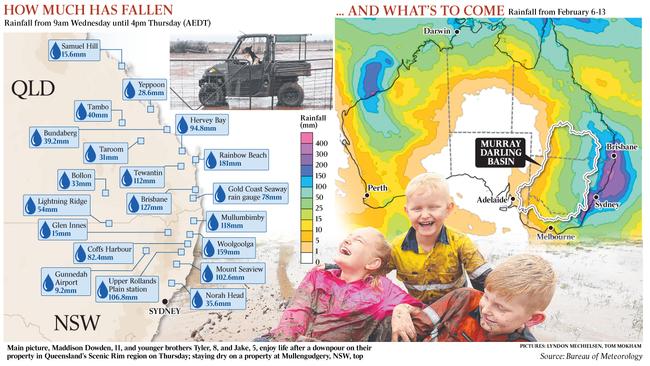
The rains on Thursday aided NSW firefighters battling a few bushfires in the north that are already contained, but a NSW Rural Fire Service spokeswoman said the most difficult bushfires were on the far south coast, in the Snowy Mountains and around Canberra. “The bureau is suggesting we are likely to see significant rainfall, or some rainfall, moving down south, which is where we need it,” she said.
Mr Sgarbossa said inland areas in NSW and Queensland where the drought has been severe had received “quite useful” rain over 24 hours, typically of 20 to 40mm.
“Several months of sustained above-average rainfall will be required, however, to help the landscape properly recover from the long-term rainfall deficiencies,” he said.
Rhyse Dowden is already talking like the farmer he wants to become. “A bit more would be nice,” he said after 206mm fell on his grandparents Ian and Betty Smith’s dairy farm in Queensland’s Scenic Rim region since Wednesday morning.
“It’s definitely a relief for my grandparents.”
The downpour brought sustenance and hope to a parched district that hasn’t had decent rainfall for years. It also carried a glimpse of a future on the land for Rhyse and his siblings, Maddison, 10, Tyler, 8, and Jake, 5, who spent Thursday afternoon playing in the fresh mud. “They actually say to us, ‘Don’t ever sell this farm, we want to run it’,” Ms Smith said.
A tropical cyclone is developing off the Kimberley coast of Western Australia, promising to bring heavy falls to the northwest.
Storages in the Murray-Darling Basin have declined disturbingly in recent months. The Murray-Darling Basin Authority’s executive director of river operations, Andrew Reynolds, said most of the recent rain had fallen east of the basin, but if there were intense storm events to the west of the divide, it could produce runoff to rivers. “The rain that is predicted over the next week is not likely to lead to really substantial improvement in storage levels,” he said.
The Australian Bureau of Agricultural and Resource Economics and Sciences’ climate, water and agricultural update, issued on Thursday, said the widespread rainfall across northern, eastern and central Australia was “likely to benefit plant growth, build soil moisture levels and provide useful inflow to farm water storages”.
Additional reporting: Charlie Peel


